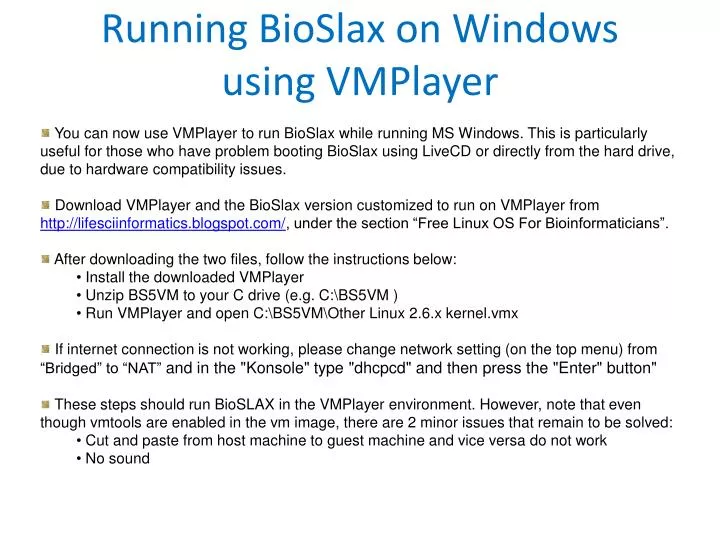


VMware Player provides a streamlined user interface for creating, running and evaluating operating systems and applications in a virtual machine on Windows or Linux PCs.

With its simple user interface, unmatched operating system support and portability, it’s now easier than ever for IT professionals to get their users up and running with a corporate desktop. VMware Player is a streamlined desktop virtualization application that runs one or more operating systems on the same computer without rebooting. You can also request support for any problems you encounter by posting in the VMWare Player forums.Desktop virtualization software which runs multiple operating systems This shows that they have not completely dropped support for version (32-bit) Player 6 and are, for the time being, providing security-fixes and even bug-fixes. In case you concerned about using an older version, notice that VM Player 6.0.7 was released on July 7th, 2015, a full 7 months after version 7.0.0 was released. For the most part, it is just bug- and security-fixes, occasionally adding support for new OSes (e.g., Windows 10), improving performance, changing/adding/improving the virtual hardware devices, and sometimes changing system limits. If you are wondering what features you will be missing out on, you can check the Release Notes of later versions. If you want it for personal use, then VM Player 6.0.7 free (non-Pro, non-trial) is-at the time of this writing-the last version that you can get which will run on a 32-bit CPU. They further clarify that VM Player Plus 6 is the last version to support a 32-bit OS (and CPU) and that you can purchase Player 7 and downgrade the key in order to use Player 6 with a current license and support.

At the bottom of the page, they say that you can run a 32-bit OS inside VM Player which is probably not what you want. The System Requirements page indicates that a 64-bit host OS is required, which implies a 64-bit CPU.


 0 kommentar(er)
0 kommentar(er)
